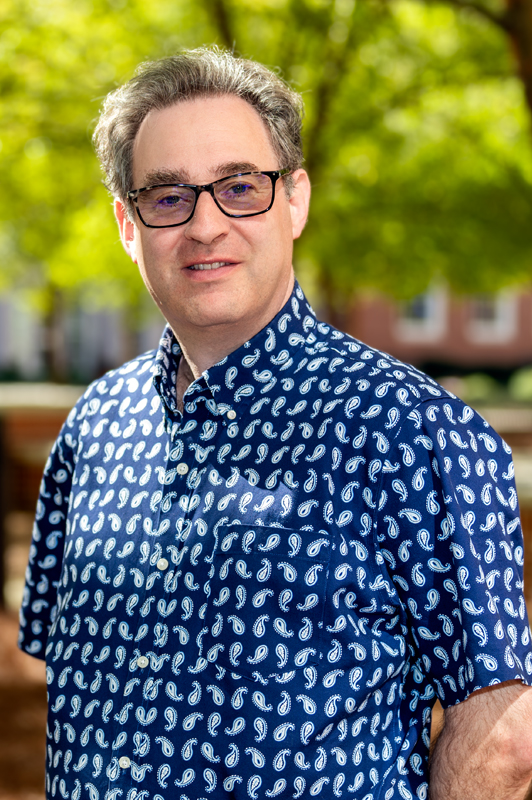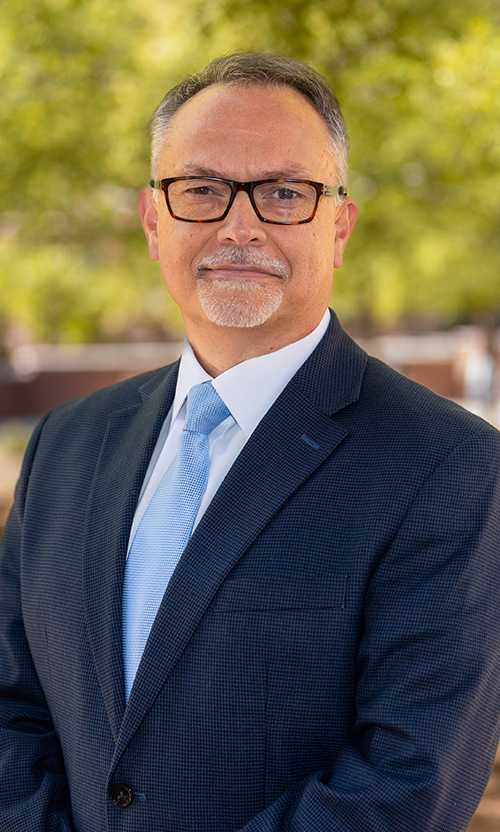Computer Science and Software Engineering class flips the script with experiential learning
Published: Jun 2, 2025 8:55 AM
By Joe McAdory
What do sidewalk chalk, marshmallows and spaghetti have to do with computer science? Abstraction, structure and active learning.
In Computer Science and Software Engineering (CSSE) Professor Daniel Tauritz’s sections of COMP 2240: Discrete Structures, a required three-hour course, students don’t just solve math problems — they experience them.
The class breaks from traditional lectures and embraces a radically interactive format. Students draw mathematical graphs on campus sidewalks with colored chalk, build 3D graph models using spaghetti and marshmallows, and navigate Shelby Center on scavenger hunts to solve mathematical relation-related puzzles. The goal: develop computer science students’ disciplinary mindset — logical reasoning, mathematical precision and abstraction — through experiential learning.
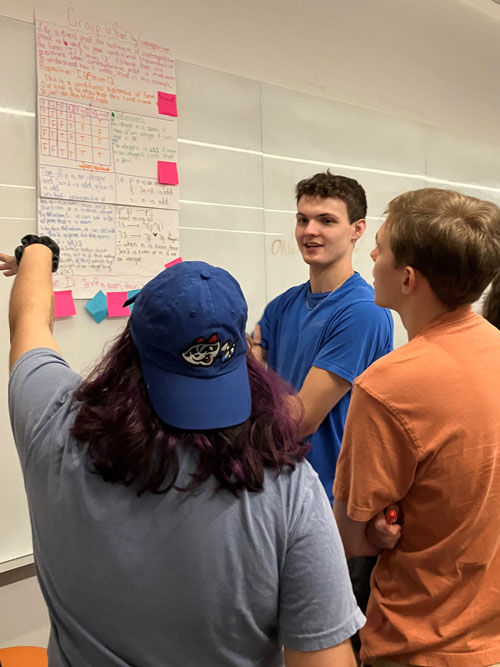
The course’s structure and content was originally developed by Joanie Morris, a lecturer in Auburn’s College of Sciences and Mathematics (COSAM), as a PhD student during the 2022–2023 academic year. Drawing from her research in discrete math and her background working with children in hands-on environments, Morris envisioned a course where students could actively engage with some of the most abstract and foundational topics in computer science.
“Concepts in this class are already abstract,” Morris said. “So I asked myself, ‘how can we make them tangible? How can we help students actually touch the math?’”
To do that, Morris built a flipped classroom model with a smorgasbord of engaging group activities. Students watch short “prep videos” before class, covering the definitions and core ideas they’ll need. Class time is devoted to hands-on, collaborative activities that guide them to discover deeper understanding. After class, students continue to interactively engage with the material through online textbooks.
“Each day is built around an activity that gets students into the core of the concept and helps them discover it on their own,” she said.
Tauritz, also the university’s director for national laboratory relationships, teaches the course now and adopted Morris’ structure. This past spring, he taught two sections of COMP 2240 — 128 students total — using the same activity-based structure.
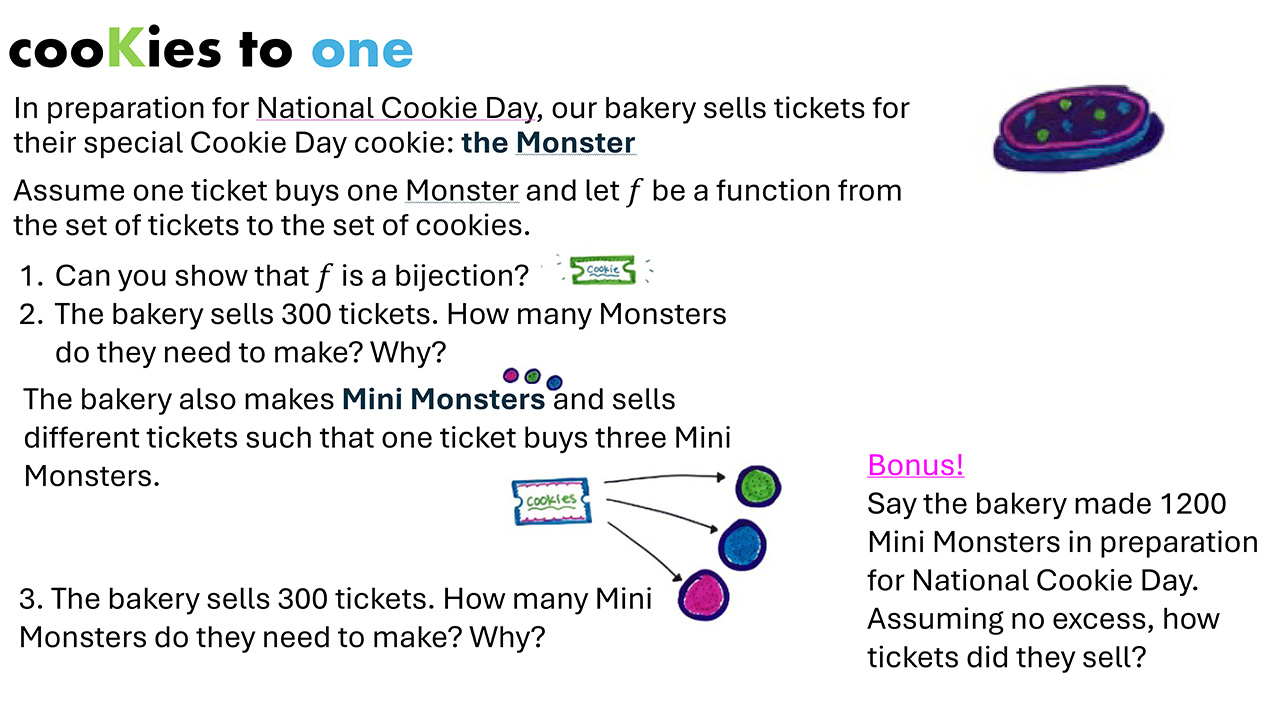
“In 2013, I experimented with a flipped classroom approach in the discrete structures class I was teaching at the time, where students formed groups to compete in a semester long problem-solving competition in which groups earned points by correctly solving problems on the blackboard in front of the entire class,” Tauritz said. “This approach failed for several reasons, including due to all the non-winning groups completely disengaging. Then in fall 2022, I had the privilege of sitting in on some of Dr. Morris’ classes, where I learned the ropes of her highly engaging, successful active learning approach. Thus inspired, in spring 2023 I taught a section alongside her section, obtaining first-hand experience in applying her approach. This past spring semester, I continued to polish and refine the course materials, but it’s essentially the same as what we taught in 2023.”
Dean Hendrix, associate dean for undergraduate studies and program assessment, said that Tauritz ‘delivers innovative teaching methods that transform the learning experience.’
“This unique approach to teaching topics from mathematics within the context of the computer science and software engineering curricula enhances student engagement and effectively bridges theoretical concepts with domain-specific applications,” Hendrix said. “Not only does this forward-thinking pedagogy distinguish our program, but it also inspires the next generation of computing professionals.”
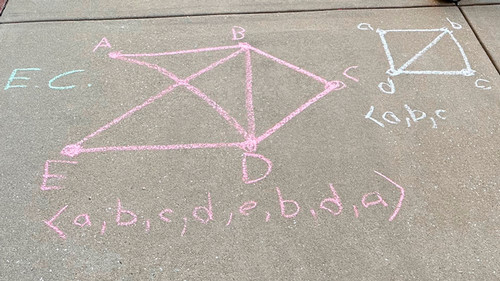
Melinda Lanius, assistant professor in COSAM’s Department of Mathematics and Statistics, said the ‘genius of the activities in COMP 2240 isn’t just that they are fun, but that they pierce the complicated, abstract haze of mathematical notation and allow students to literally touch math.’
“While the use of tactile household objects may initially seem out of place in a college classroom, the use of these objects to embody complex and abstract ideas is leveraging our current best understanding of cognitive science,” she said. “Conceptual metaphor is the way that people understand challenging abstract concepts and in particular, grounding metaphors allow people to understand abstract concepts by projecting their everyday experiences onto those concepts. The COMP 2240 activities artfully invite students to develop conceptual metaphors.”
Discrete Structures offers three central learning outcomes. Students must master the fundamentals of discrete mathematics, understand how those concepts apply to CSSE and develop the mindset and ability to use them for computational modeling and problem solving.
Students work in groups, often around rolling or stationary whiteboards when they aren’t drawing graphs and matrices outside on sidewalks. They model probability experiments with playing cards and dice. When studying graph algorithms, students navigate life-sized graphs made of tape on the floor.
One day, they’re creating research-style posters showcasing their induction proofs for their classmates to critique. Another day, they’re solving combinatorics problems during the class' "Cookie Counting Carnival" — a challenge that rewards correct answers with paper cookies, which can be exchanged for real ones.
“When they’re laughing and accidentally enjoying themselves, students forget that they’ve told themselves that they’re ‘bad’ at math,” Morris said. “That opens the door for real understanding.”
Tauritz said the class prepares students for critical real-world applications like computer network design, formal verification and cryptography. Students learn to construct logic proofs and develop the mathematical reasoning required for writing and verifying high-assurance software.
“You want to know if a variable will always be below a certain threshold in a flight control system? You prove it mathematically,” Tauritz said. “The techniques we teach here — like induction proofs — are used in verifying safety-critical code.”
While the material is dense, the structure allows students to engage deeply. Despite class sizes growing to more than 60 students per section, the model has proven scalable — with the right support.
“It’s scalable to a point, but only if you have sufficient instructional staff to support the students in their learning process,” Tauritz said. “With undergraduate teaching assistants facilitating the activities, we can maintain individual guidance and keep every group moving forward.
“The impact on student motivation and learning has been dramatic. Students who might otherwise disengage become active participants. This course re-wires how they think. It teaches them to approach problems like a computer scientist — logically, precisely and creatively.”
Morris said that at its core, COMP 2240 is not just about math, but about helping students feel confident and capable in a field that can often feel exclusive.
“This isn’t just about content,” Morris said. “It’s about creating a classroom where students feel like they belong — where they can see themselves succeeding.”
Even if it means learning rigorous computer science mathematics using sidewalk chalk and spaghetti.
Media Contact: , jem0040@auburn.edu, 334.844.3447
Students in COMP 2240 build 3D graph models using spaghetti and marshmallows.


